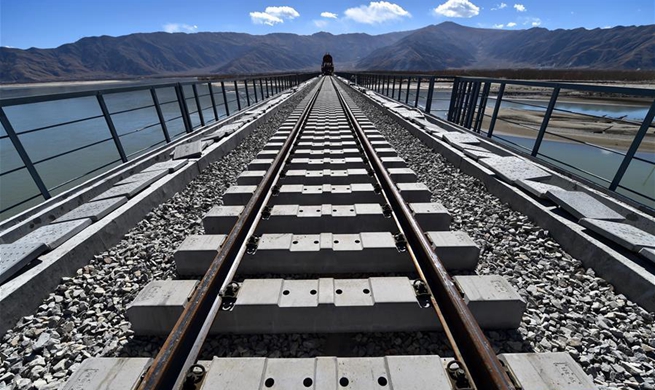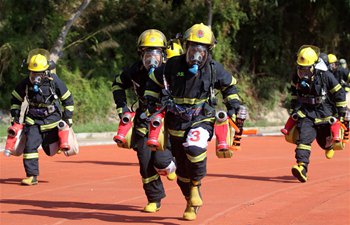by Tan Jingjing
LOS ANGELES, Nov. 25 (Xinhua) -- A successful entry, descent and landing (EDL) on Mars of the U.S. spacecraft InSight will be largely decided by the two events of parachute deployment and radar lock-up, chief scientist of the Mars lander Bruce Banerdt said Sunday.
The National Aeronautics and Space Administration (NASA) on Wednesday said InSight is scheduled to touch down on Mars at approximately 3 p.m. EST (2000 GMT) on Monday, after a six-month, 300-million-mile (480-million-km) journey. The U.S. space agency said it will provide an online live broadcast of the event.
Banerdt told Xinhua that InSight will have to carry out several extremely difficult activities to ensure a successful landing. And "The two most critical events are the deployment of the parachute and the 'locking up' of the radar with the surface."
The parachute is expected to deploy at supersonic velocities, and it is difficult or impossible to mathematically model the process completely or to test the process in a wind tunnel, Banerdt explained.
The radar lock-up is the process through which the radar finds the ground and is able to start telling the computer how high the spacecraft is. "This is a very difficult activity that has to be done automatically by the lander," he said.
InSight will plunge through the thin Martian atmosphere, heatshield first, and use a parachute to slow down. Then, it will fire its retro rockets to slowly descend to the surface of Mars, and land on the smooth plains of Elysium Planitia.
"The InSight lander is perfectly suited to the science we want to do on Mars, which is to probe the deep interior using seismology, heat flow measurements and precision tracking," Banerdt said.
"A rover would not work for us because we need to stay very still in one location for a long time in order to collect our science data," he added.
Launched on May 5, InSight marks NASA's first Mars landing since the Curiosity rover in 2012 and the first dedicated to exploring the deep interior of Mars.
Banerdt said there are many hypotheses about how Mars evolved very early in its history. However, they all involve a process called "differentiation", where the planet melts either completely or partially and the materials in this ocean of magma separate as they cool and crystallize.
"Many of the hypotheses that we will be trying to test have to do with the details of that process, such as how long it took, whether it was turbulent or calm, and how efficiently heat was able to escape from the depths to the surface," he said.
Scoping out the insides of Mars could help scientists to understand how our neighbor in the Solar System and other rocky worlds including the earth and the moon formed and transformed over billions of years.
Banerdt said InSight's two-year mission would be long enough to dedect a suitable number of marsquakes to get enough data to answer their major scientific questions.
"It also comprises a complete cycle of martian seasons, so since we designed our lander to survive both winter and summer, we may have the opportunity to extend our mission even longer, " he said.
InSight is being followed to Mars by two mini-spacecraft comprising NASA's Mars Cube One (MarCO), the first deep-space mission for CubeSats. If MarCO makes its planned Mars flyby, it will attempt to relay data from InSight as it enters the planet's atmosphere and lands.
InSight and MarCO flight controllers will monitor the spacecraft's EDL from mission control at NASA's Jet Propulsion Laboratory in Pasadena, California.
About two hours before hitting Mars' atmosphere, the EDL team might also upload some final tweaks to the algorithm that guides InSight safely to the surface. These will be the last commands issued to InSight before it robotically guides itself the rest of the way.
After landing on Mars, InSight will spread its solar panels, unfold a robotic arm, and stay put. Unlike NASA's rovers, InSight is a lander designed to study an entire planet from just one spot.













